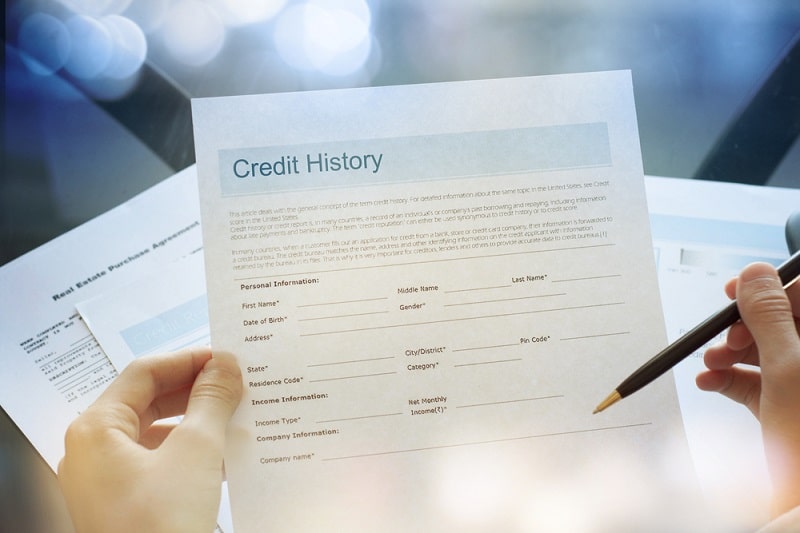How to Remove a Bankruptcy from Your Credit Report Early
Bankruptcy can stay on your credit report for up to 10 years—but in some cases, you may be able to remove it sooner.
If the bankruptcy has errors or the credit bureaus can’t verify the details, you could get it taken off early. Even if it stays on your report, there are ways to rebuild your credit faster than you might expect.

In this guide, we’ll cover how long bankruptcy usually stays on your credit report, how you might be able to remove it early, and how to start improving your credit in the meantime.
How Long Does Bankruptcy Stay on Your Credit Report?
Bankruptcy can have a long-lasting impact on your credit, but it won’t stay there forever. How long it sticks around depends on the type you filed.
- Chapter 7: This stays on your credit report for up to 10 years from the filing date.
- Chapter 13: This typically stays on your report for up to 7 years from the filing date, assuming you completed the court-approved repayment plan. If the plan wasn’t completed, it may stay on for up to 10 years.
During that time, the bankruptcy will lower your credit score and may make it more difficult to qualify for loans, credit cards, or even rent an apartment. But as time passes, its impact lessens—especially if you take steps to rebuild your credit.
Can You Remove Bankruptcy From Your Credit Report Early?
Most bankruptcies remain on credit reports for the full reporting period. But in some cases, you might be able to get it removed early.
Here’s when that might happen:
- The bankruptcy was reported with errors. Mistakes like wrong dates, incorrect account details, or even identity mix-ups can open the door for early removal.
- The credit bureaus can’t verify the bankruptcy. Under the Fair Credit Reporting Act (FCRA), if a credit bureau can’t confirm the accuracy of a negative item after you dispute it, they must delete it—even bankruptcies.
That said, simply wanting a bankruptcy removed early or claiming hardship won’t get it removed. You need to either prove it’s being reported incorrectly or challenge the bureaus to verify it—and hope they fail.
4 Steps to Attempt Early Bankruptcy Removal
If your bankruptcy has errors or the credit bureaus can’t verify it, you may be able to have it removed early. The process takes time and persistence, but it’s possible in some cases. Here’s what to do.
Step 1: Check for Reporting Errors
Start by getting your credit reports from all three major credit bureaus: Equifax, Experian, and TransUnion. You can get free reports from each bureau once a year at AnnualCreditReport.com.
Review every detail related to the bankruptcy. Look for:
- Wrong dates (filing date, discharge date, etc.)
- Incorrect amounts or account balances
- Accounts included in the bankruptcy that shouldn’t be
- Accounts missing that were part of the bankruptcy
- Identity errors, such as another person’s bankruptcy appearing on your report
Pro Tip: Credit reports from different bureaus may show slightly different information. Make sure to check all three, not just one.
If you spot errors, gather any supporting documents (like your bankruptcy filing papers or discharge notice) to help prove the mistake.
Step 2: Dispute the Bankruptcy Entry
You can file a dispute with each credit bureau that is reporting the error. Disputes can usually be filed online, over the phone, or by mail.
While online disputes are faster, sending a dispute by certified mail is often recommended for serious matters like bankruptcy. This gives you a paper trail in case you need to escalate your efforts later.
When you file your dispute:
- Explain the error clearly and concisely.
- Include copies (never originals) of any documents that support your claim.
- Keep copies of everything you send.
The credit bureau has 30 days to investigate and respond. If they agree the information is wrong or can’t verify it, they must delete or correct the entry.
Step 3: Send a Procedural Request Letter
If the credit bureau refuses to delete the bankruptcy or claims it verified the information, don’t stop there.
Send the bureau a procedural request letter, asking how they verified the bankruptcy. Under the Fair Credit Reporting Act (FCRA), you have the right to know how they confirmed the information.
In most cases, the bureau will respond that they verified the bankruptcy through the court where it was filed. But here’s the problem: Courts typically do not verify bankruptcies for credit reporting agencies. They provide public records, but they don’t confirm specific details for third parties.
Step 4: Contact the Court
Contact the court that supposedly verified the bankruptcy. This is usually the U.S. Bankruptcy Court where you filed your case.
Ask them, in writing if possible, whether they provided any information or verification to the credit bureaus.
In most cases, the court will confirm that they don’t verify bankruptcies for credit reporting purposes.
If you receive confirmation that no verification occurred, you can return to the credit bureaus with this evidence. Under the FCRA, if they can’t verify the information, they are required to delete it from your credit report.
Important: Be prepared for this to take multiple rounds of letters and follow-ups. Credit bureaus don’t always remove negative entries easily, even when you have a strong case.
Should You Hire a Credit Repair Company?
You have the right to dispute credit report errors on your own, and many people successfully remove inaccurate items without professional help. But challenging a bankruptcy—especially if the credit bureaus push back—can be a time-consuming and frustrating process.
If the process becomes overwhelming, or if you’re not confident handling disputes and procedural requests, working with a reputable credit repair company might be worth considering.
A good credit repair company can:
- Review your credit reports for errors or unverifiable information
- Handle disputes and correspondence with credit bureaus
- Follow up on verification requests and responses
- Help address other negative items like collections or charge-offs while working on the bankruptcy
Important: Be cautious. Only choose companies that comply with the Credit Repair Organizations Act (CROA). Stay away from anyone promising guaranteed results or fast bankruptcy removal—that’s usually a red flag.
How to Rebuild Credit After Bankruptcy
Even if your bankruptcy stays on your credit report for several years, you don’t have to wait that long to start improving your credit score. With the right steps, you can rebuild credit and improve your chances of qualifying for loans, credit cards, or rental housing much sooner.
Here’s how to get started:
Stick to a Budget
The first step is keeping your finances in order so you don’t fall into new debt. Set a realistic monthly budget that covers your essentials, savings, and any remaining debts.
Build an Emergency Fund
Having a rainy-day fund can prevent future financial setbacks. Even a small savings cushion can help avoid relying on credit cards or loans in an emergency.
Open a Secured Credit Card
Many banks and credit unions offer secured credit cards. These require a refundable deposit and can help you start building a positive payment history. Use the card for small purchases and pay the balance in full every month.
Keep Credit Utilization Low
Try to use no more than 30% of your available credit limit. Lower is even better. High utilization can hurt your credit score, even if you pay on time.
Make All Payments On Time
Payment history is the biggest factor in your credit score. Pay all your bills—credit cards, loans, utilities, and even rent—by the due date every month.
Consider a Credit-Builder Loan
Some banks and credit unions offer credit-builder loans. These are small loans designed to help you establish a positive payment record. Payments are reported to the credit bureaus, which can help improve your score.
Monitor Your Credit Reports Regularly
Keep an eye on your credit reports to track your progress and catch any errors that might be holding your score down.
Be Patient and Stay Consistent
Rebuilding credit takes time. Positive actions won’t erase the bankruptcy right away, but they can help offset its impact and prepare you for stronger credit once it finally drops off your report.
Final Thoughts
Bankruptcy can feel like a major setback, but it doesn’t have to define your financial future. While early removal from your credit report is possible in some cases—especially if there are reporting errors or verification issues—it often requires patience and persistence.
Even if the bankruptcy stays on your report for the full time allowed, you can still take control of your credit. By disputing inaccuracies, using smart credit-building strategies, and staying consistent with your finances, you can start rebuilding your credit sooner than you might expect.
Taking small, steady steps today can lead to better credit and more financial opportunities down the road.



